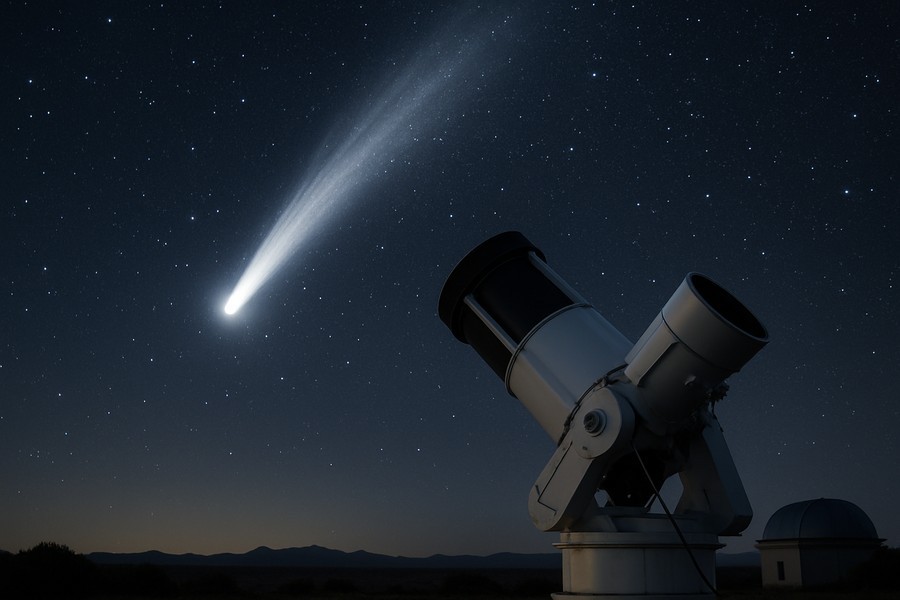
Star-Borne Comet Flourishes its Tail, As Captured in Recent Telescope Imagery
An awe-inspiring image has been unveiled, revealing the increasingly elongating tail of a comet originating from a different star system, painting a breathtaking streak across our solar system.
This image, a stunning snapshot of the comet known as 3I/ATLAS, was obtained during an event intended to engage the public and students with the world of astronomy. This event took place at a noteworthy observatory in Chile and utilized one of the facility's telescopes.
A Rare Interstellar Visitor
This celestial body is recognized as only the third interstellar object to grace our solar system with its presence. Despite its extraterrestrial origin, it doesn't pose a threat to our planet, previously assured by space exploration authorities.
The comet 3I/ATLAS has been the subject of multiple photographic endeavors since its first sighting in July. In the early days of August, a joint effort between American and European space agencies resulted in images taken by the Hubble Space Telescope. At the time, the comet was a considerable 277 million miles away from Earth.
New Image Highlights Comet's Activity
The recent image from the Chilean observatory offers a compelling depiction of the comet's extensive coma. This is an enveloping cloud of dust and gas that forms around a comet's nucleus as it nears the sun. The tail of the comet, which points away from the sun, measures roughly 1/200th of a degree in the sky. To put that into perspective, one degree is approximately the width of your little finger.
The characteristics of the comet are "considerably more pronounced than they appeared in earlier images," as per the astronomers. This suggests that the comet is displaying increased activity as it journeys through the inner solar system.
Observatory Session Enhances Understanding
The main goal of the observatory session, which allowed the public and students to virtually join astronomers at the controls, was to observe the light wavelengths emitted from the comet. These wavelengths, or spectrum, can provide critical insights into the composition and chemistry of the comet. This knowledge contributes to our understanding of how the comet evolves as it traverses the solar system.
Space experts have previously projected that the comet is due to approach the sun most closely towards the end of October, passing between the orbits of Mars and Earth. The comet will likely remain visible throughout September, before getting too close to the sun for observation. It is expected to reemerge on the other side of the sun in early December.
A Rare Phenomenon
Interstellar comets like 3I/ATLAS are a rare phenomenon, with only two confirmed instances to date: 1I/'Oumuamu in 2017 and 2I/Borisov in 2019.
"As 3I/ATLAS accelerates back into the depths of interstellar space, this image signifies both a scientific achievement and a source of awe," commented a leading member of the observation program and a renowned astronomer at the University of Hawai'i Institute for Astronomy. "It serves as a vivid reminder that our Solar System is but a small part of an expansive and dynamic galaxy, and that even the most fleeting visitors can leave a lasting impression."
